Farewell to Afghanistan, ‘a horrifyingly violent place’
‘There are things I cannot unsee,’ says photographer Gary Ramage of the 15 years he spent embedded with US and Australian troops in Afghanistan.
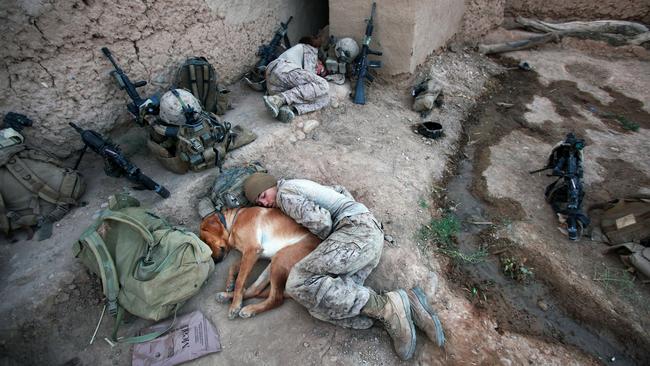
Kabul had clear skies that day. You could see for miles. There was still a dusting of snow on the distant mountains of the Hindu Kush that surround the ancient city. But on the tarmac, the air was dry and hot with just a slight breeze as the RAAF teams worked to get equipment loaded onto the aircraft. It was June 18 and the remaining six soldiers from the Australian Task Group Afghanistan were leaving the country for good.
Brigadier Todd Ashurst, the Australian Task Group Afghanistan Commander, noted the occasion with these words: “As 20 years of Australian involvement in Afghanistan comes to a close, we reflect on our achievements as part of the Coalition and remember the 41 Australian soldiers who lost their lives here.” Having covered the ADF’s involvement in Afghanistan since 2006, this was also my swan song in the “graveyard of empires”.
As a photographer and photojournalist, I accompanied American and Australian troops into combat over a period of 15 years. It was a humbling experience to capture the young Diggers on operations with my camera; I witnessed some fantastic people doing extraordinary things. But I also saw some shocking acts of violence against those who could not defend themselves. The atrocities carried out by the Taliban on the local population were criminal and beyond comprehension.
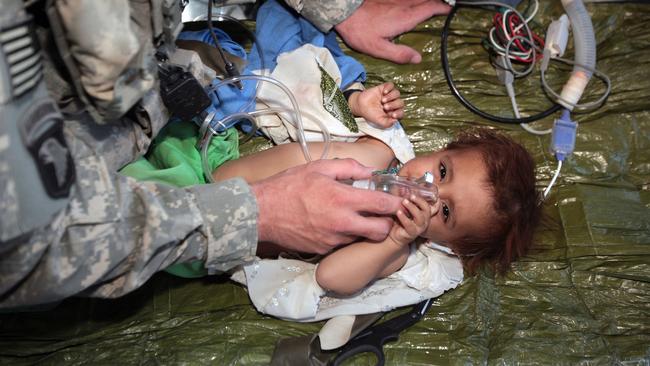
On one occasion, while embedded with US forces in Helmand province, I was travelling on a US Army Black Hawk medevac helicopter on a priority two call out to collect an injured child. It was not until the small child was loaded onto the aircraft that the medic, Sergeant Adam Monotavon, realised the severity of the situation. Someone had forced the baby girl to consume a quantity of diesel fuel. Her health was deteriorating rapidly. The Taliban often used children as bait to lure the medevac helicopters into an area so they could shoot them down.
Adam stabilised the little girl as we raced back to the field hospital at the Forward Operating Base. The chopper came in low and fast. Adam threw open the door, picked the child up in his arms and jumped out, in the process badly spraining his ankle. But he didn’t miss a beat, keeping a tight hold on his patient as he ran towards the field hospital.
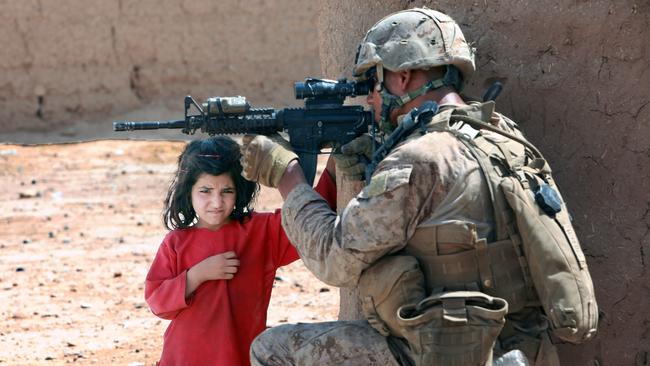
There are things I have seen that I cannot unsee. While working with the Australians in Kandahar in 2009 with journalists Ian McPhedran and Sally Sara, we gained permission to visit the Role Three Hospital, run by the Canadians. It is a day that is seared into my memory. Things started to heat up early in the afternoon, and by the end of the day, the emergency room had received 17 priority one casualties. Some would not survive. A suicide bomber had walked up to a group of Marines in a nearby village and detonated his bomb.
Meanwhile, a family of three small children had accidentally detonated an IED – an improvised explosive device – in their remote village. Two boys, brothers, were brought into the ER. One lost his arm but survived; his little brother died from his injuries. His screams of agony still haunt me to this day. Later that night, when I ducked outside to grab some fresh air, I noticed a medic carrying a very small black body bag. He was walking slowly and cradling the tiny body inside the bag. His head was bowed as he carried the little boy to the morgue.
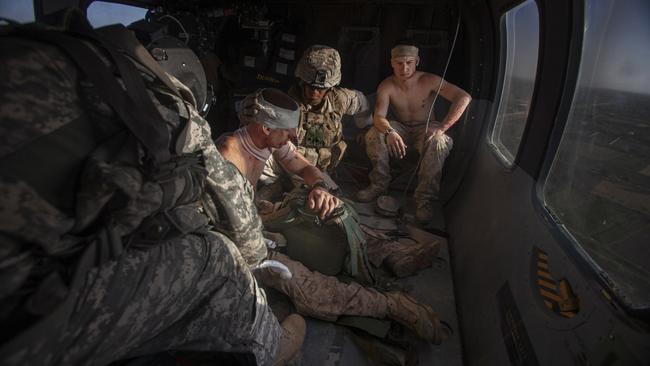
Afghanistan was a horrifyingly violent place during the war. On an earlier medevac flight, we were sent to pick up badly wounded Marines. When we arrived at the makeshift landing zone, we were put in a holding pattern as the battle between the Marines and the Taliban raged below us. Apache helicopter gunships were strafing the ground to rid the area of the Taliban so that we could land safely. Then the call came over the internal radio that I had always feared, “Hot LZ [landing zone], taking fire, priority one casualty, sucking chest wound, wait out”.
Adam was yelling over the radio, “Let’s go, we got to get down there now” as the radio operator on the ground announced, “Patient is crashing.” The pilots took immediate action. We flew low and fast and came down onto the LZ as fighting continued. Adam leapt from the chopper and ran over open ground towards four Marines dragging their wounded comrade who had been shot in the chest. The boys dragged him into the chopper, and we were up and gone in a matter of seconds.
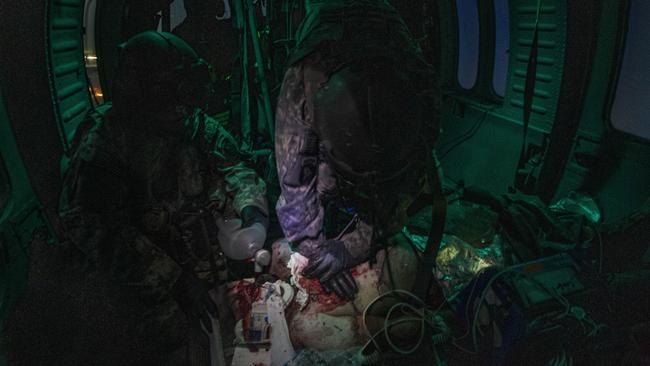
The medic and the crew chief went to work straight away. There was blood all over the floor of the helicopter and the young Marine was motionless. His chest was not moving. The medic kept going with CPR the entire flight, but I could see he was becoming exhausted. He glanced at me, and I knew what I had to do. I unbuckled my safety harness, unclipped my cameras and dropped to my knees. Adam gave me the manual resuscitator. I placed it over the Marine’s mouth and started pumping air into his lungs until we landed back at the FOB. Despite everyone’s frantic efforts, he was dead on arrival.
As is often the case, we had no time to process what had just happened. We were back in the air in a matter of minutes, racing to the next emergency. Over the next two days, I witnessed two more young Marines – both just boys – die at my feet on the floor of that helicopter. These are experiences I’m unable to forget.
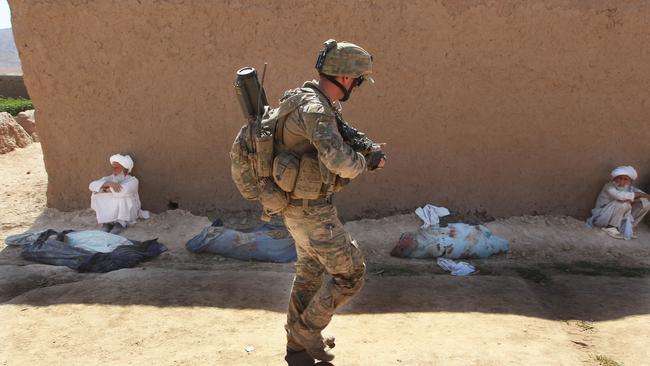
On one flight, we picked up seven Marines whose vehicle had hit a large IED, killing four of them. The next call-out was to pick up a Taliban bombmaker who had stuffed up and blown himself up. I struggled to understand how this person, who probably made the bomb that had just killed several Marines only a few hours earlier, was now being treated and saved by the same people he was trying to kill. None of it made sense to me.
I voiced my misgivings to the medic, but he turned to me and said, “He is no longer my enemy but an injured human being, and it’s my job to save him.” I could not believe the compassion this young man was displaying towards his former enemy. I now felt ashamed of my previous thoughts – it was a valuable lesson for me.
I lost count of the single and double amputee victims picked up during the 43 Dust-Off missions I joined. I remember one young Marine who stood on an IED and lost the front of his foot. He held my hand for the entire flight and thanked me for being there with him at that moment.
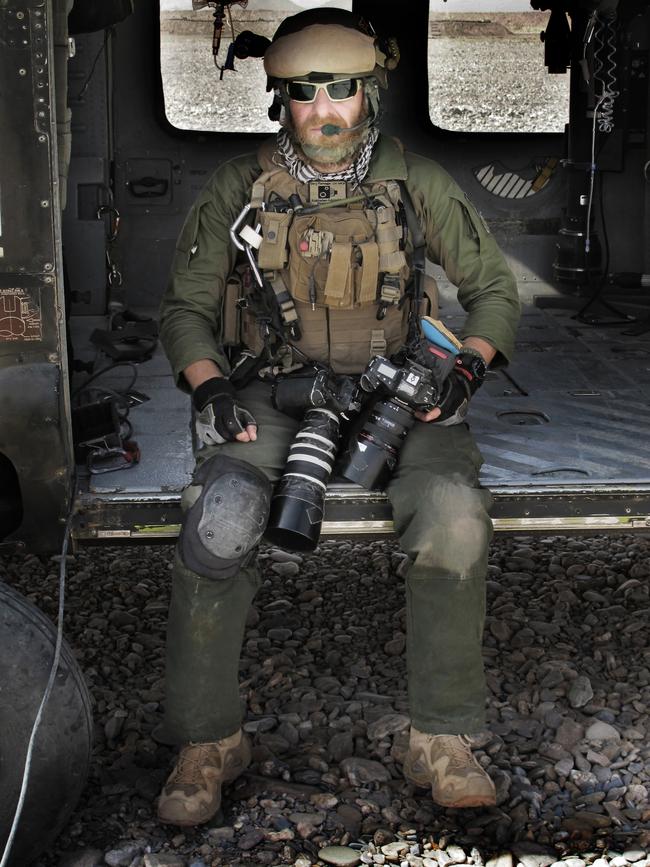
These are just some of the memories of my time in Afghanistan. They will stay with me. In many ways they have shaped me. It is not only soldiers who come home with the scars of war, as trauma affects different people differently. Those of us who cover war deal with it in many ways. Some turn to the bottle and others to drugs, but in the end all the anger, rage and frustration you suppress finds its way to the surface. Sooner or later, the black dog will raise its head. With time the mind can heal, the nightmares hopefully disappear, and the constant flashbacks that freeze you in place no longer haunt you. For most, life will go on.
But others remain forever scarred, unable to move on. The number of veteran suicides bears witness to this. This is one of the reasons I’ve felt compelled to return to Afghanistan so many times. I strongly believed in the need to document the story of Australia in Afghanistan.
On Friday, June 18, 2021, an RAAF C-130 taxied down the runway, lifting off from the Hamid Karzai International Airport in Kabul, Afghanistan for the last time. As the only Australian civilian photographer granted permission to be on that historic last flight, it was a huge honour. And it was closure.
I have finally written my last chapter on the Afghanistan mission. The only lingering question now is, “Was it all worth it?”

To join the conversation, please log in. Don't have an account? Register
Join the conversation, you are commenting as Logout